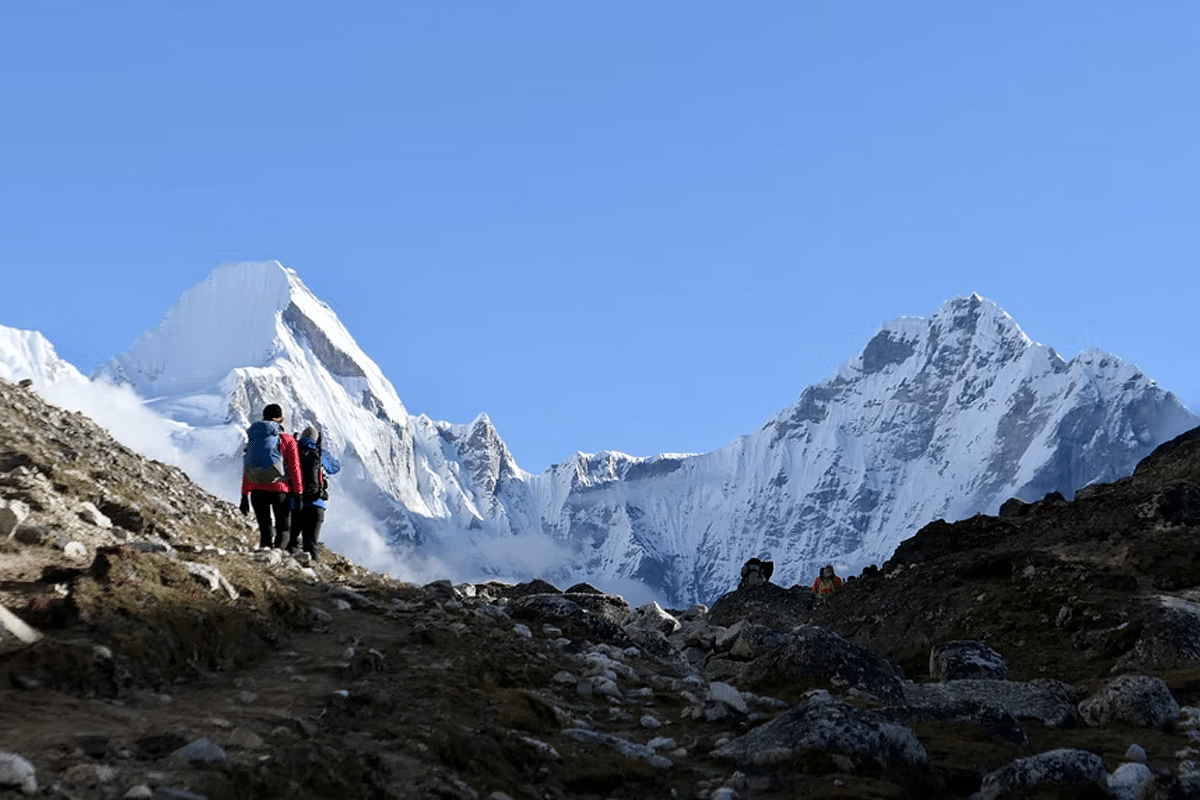News Brief
Setting Foot On Top Of The World Will Become A Lot Safer Soon
- French mountaineer Marc Batard who was the first to get on ‘top of the world’ without bottled oxygen, is preparing a new route that will make the climb to Everest a lot safer since it will skirt the Khumbu Icefall, which claims many lives every year.

Mount Everest (Unsplash)
Summiting Mount Everest will become a lot less perilous with a new route bypassing an extremely risky ‘icefall’ being charted by a joint team of Nepali and French climbers.
Celebrated French mountaineer Marc Batard who was the first to get on ‘top of the world’ without bottled oxygen in 1988 is currently leading an eight-member team that will spend the next one and half months preparing the new route and piloting it.
Batard, 70, said the new route will make the climb to Everest a lot safer since it will skirt the Khumbu Icefall which claims many lives every year. An icefall is a frozen waterfall and climbing it is extremely hazardous.
The Khumbu Icefall (read more about it here), which stretches for over a kilometer, has deep crevices and, often, thin sheets of ice covering such crevices. Climbers use ladders to gingerly cross these crevices, but the moving ice blocks often cause accidents.
Climbers usually cross the Khumbu Icefall between 3am and 5am when the ice blocks and hanging glaciers are stable. After daybreak, the sun’s rays melt the ice and make the icefall highly unstable. One of the worst accidents on the Khumbu Icefall in recent times was on 18 April, 2014, when a falling serac (a block of glacial ice) buried sixteen Sherpas in the icefall.
Batard undertook an aerial survey of the new route and started the survey work on it in November last year. At that time, he led a seven-member reconnaissance team that comprised his son and expert guide Pasang Nuru Sherpa to undertake a preliminary on-ground survey of the new route.
They made Gorak Shep (5,164 metres) their base camp. The team climbed the Nuptse ridge (5,800 metres) and then traversed through a rocky spur below the flank of Mount Nuptse (7,861 metres). This spur--a vertical cliff--is the most difficult climb on the proposed new route. After that, the climb to Everest becomes much easier.
Batard plans two camps, the first at 6,065 metres and the second at 6,400 metres, before climbers make the final climb to Everest. The third one at 7,800 metres may also be set up if necessary. Climbers say there is no risk of an avalanche on Nuptse Ridge and other parts of the proposed route.
Senior officers of Nepal’s Department of Tourism which regulate expeditions to Everest say that the new route will, in all probability, be found to be very viable and a lot more preferable and safer than the existing route which takes climbers over the Khumbu Icefall.
But about €500,000 (Nepali Rupee 6.6 crore) will have to be invested to operationalise the new route. The operationalisation involves drilling rocks to permanently install metal hooks and rock pitons. But the investment will be worth it since it will save many lives.
Support Swarajya's 50 Ground Reports Project & Sponsor A Story
Every general election Swarajya does a 50 ground reports project.
Aimed only at serious readers and those who appreciate the nuances of political undercurrents, the project provides a sense of India's electoral landscape. As you know, these reports are produced after considerable investment of travel, time and effort on the ground.
This time too we've kicked off the project in style and have covered over 30 constituencies already. If you're someone who appreciates such work and have enjoyed our coverage please consider sponsoring a ground report for just Rs 2999 to Rs 19,999 - it goes a long way in helping us produce more quality reportage.
You can also back this project by becoming a subscriber for as little as Rs 999 - so do click on this links and choose a plan that suits you and back us.
Click below to contribute.
Latest